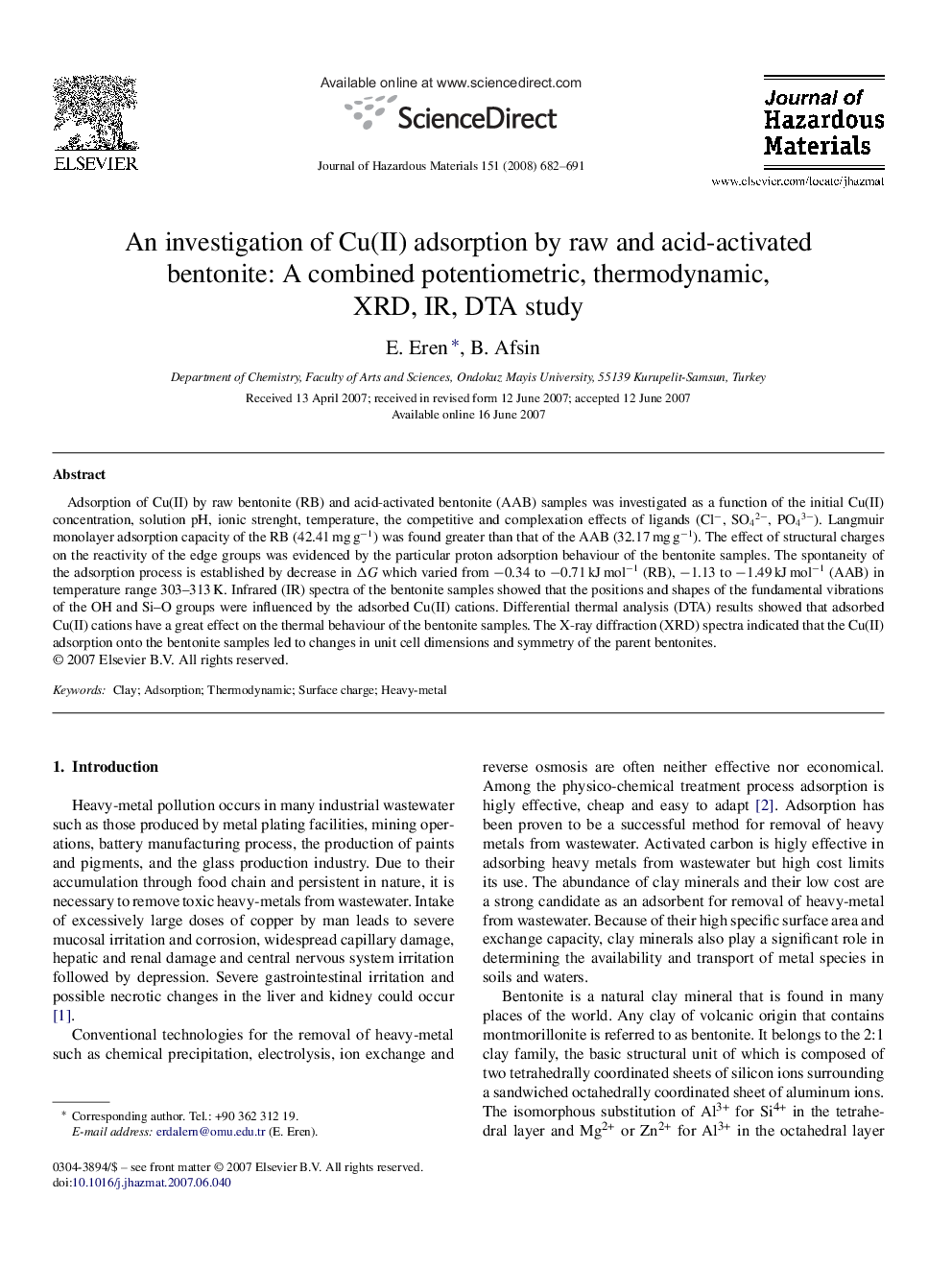| Article ID | Journal | Published Year | Pages | File Type |
|---|---|---|---|---|
| 583493 | Journal of Hazardous Materials | 2008 | 10 Pages |
Abstract
Adsorption of Cu(II) by raw bentonite (RB) and acid-activated bentonite (AAB) samples was investigated as a function of the initial Cu(II) concentration, solution pH, ionic strenght, temperature, the competitive and complexation effects of ligands (Clâ, SO42â, PO43â). Langmuir monolayer adsorption capacity of the RB (42.41 mg gâ1) was found greater than that of the AAB (32.17 mg gâ1). The effect of structural charges on the reactivity of the edge groups was evidenced by the particular proton adsorption behaviour of the bentonite samples. The spontaneity of the adsorption process is established by decrease in ÎG which varied from â0.34 to â0.71 kJ molâ1 (RB), â1.13 to â1.49 kJ molâ1 (AAB) in temperature range 303-313 K. Infrared (IR) spectra of the bentonite samples showed that the positions and shapes of the fundamental vibrations of the OH and Si-O groups were influenced by the adsorbed Cu(II) cations. Differential thermal analysis (DTA) results showed that adsorbed Cu(II) cations have a great effect on the thermal behaviour of the bentonite samples. The X-ray diffraction (XRD) spectra indicated that the Cu(II) adsorption onto the bentonite samples led to changes in unit cell dimensions and symmetry of the parent bentonites.
Related Topics
Physical Sciences and Engineering
Chemical Engineering
Chemical Health and Safety
Authors
E. Eren, B. Afsin,
